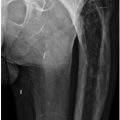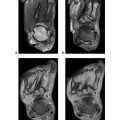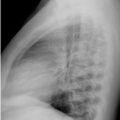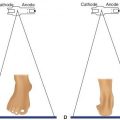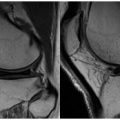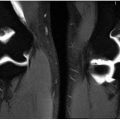A. Posterior horn of the lateral meniscus
B. Anterior horn of the lateral meniscus
C. Posterior horn of the medial meniscus
D. Anterior horn of the medial meniscus
2 A 62-year-old female presents with a radial head fracture. What is noted by the arrow on the images below?
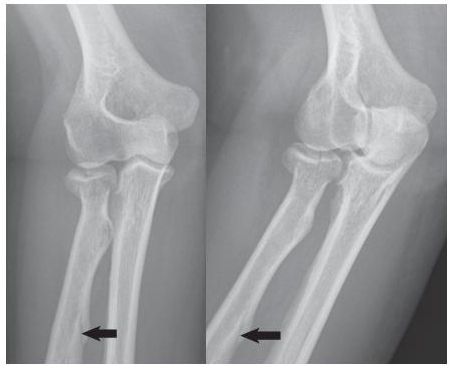
A. Nondisplaced fracture
B. Nutrient channel
C. Origin of flexor digitorum profundus muscle
D. Groove for the median nerve
3 A 62-year-old female presents with trauma of her right arm. What is the most likely cause for the alignment of the radius and ulna?
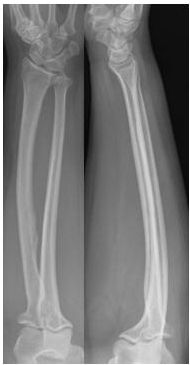
A. Physiologic bowing
B. Dislocation of the radial head
C. Dislocation of the distal ulna
D. Greenstick fracture of the radius and ulna
4 Regarding the lucency in the humeral head, what is the next most appropriate imaging study?
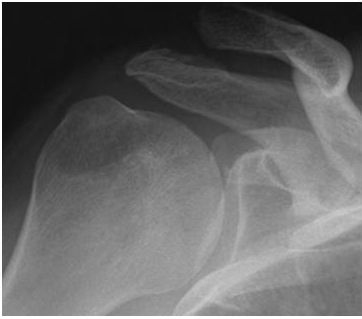
A. Additional radiographs
B. CT
C. MRI
D. Nuclear medicine bone scan
5 A 14-year-old male presents with pain in his knee after a sports-related injury. What is noted by the arrows on the image below?
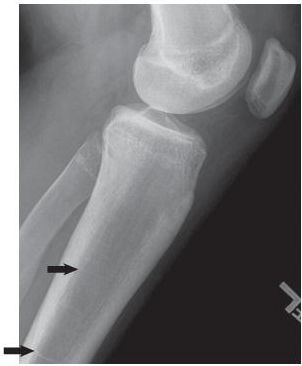
A. Stress fracture
B. Lead lines
C. Transverse growth lines
D. Metaphyseal lines
6 An 11-year-old male presents with knee pain. A periosteal desmoid is incidentally noted. Which option below correctly describes the classic location for this finding?
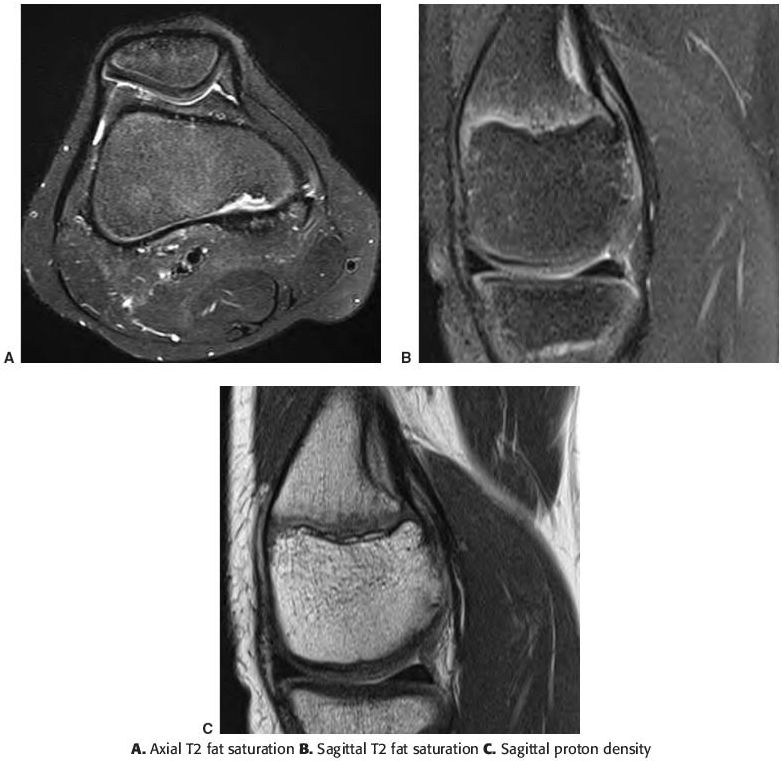
A. Insertion of the semitendinosus tendon
B. Origin of the popliteus tendon
C. Insertion of the semimembranosus tendon
D. Origin of the medial head of the gastrocnemius tendon
7a What structure is noted by the arrows on the images below?

A. Peroneus quartus muscle
B. Accessory soleus muscle
C. Accessory flexor digitorum longus muscle
D. Plantaris muscle
7b What is the most common accessory muscle of the ankle?
A. Peroneus quartus
B. Accessory soleus
C. Accessory flexor digitorum longus
D. Peroneocalcaneus internus
8
Stay updated, free articles. Join our Telegram channel

Full access? Get Clinical Tree


